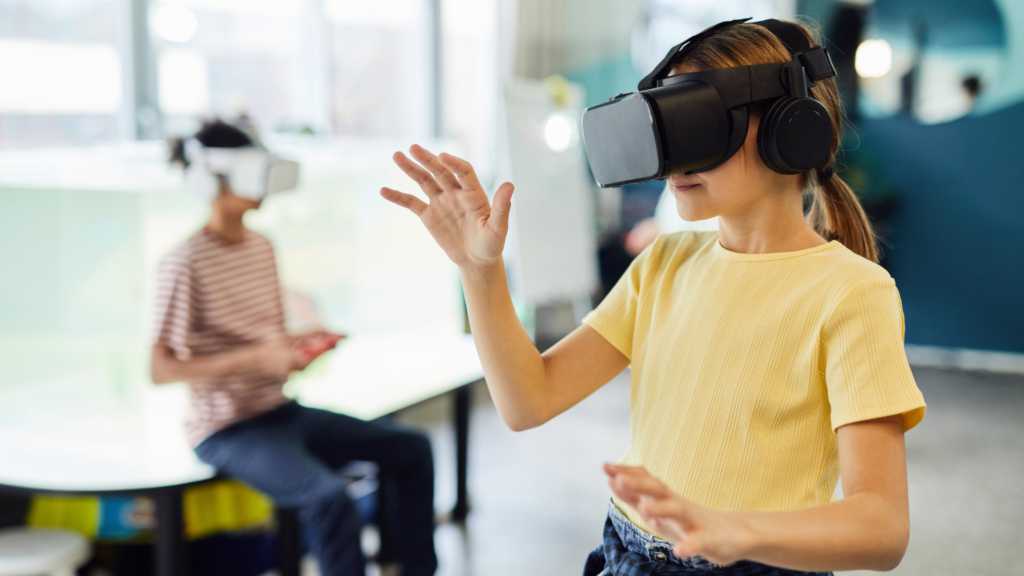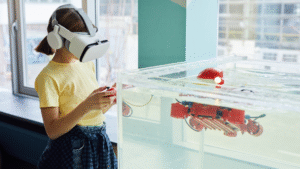Wearable technology is rapidly evolving, transforming how individuals interact with the digital world. From fitness trackers to smart glasses, these devices are becoming more integrated into everyday life. The future of wearable tech promises to enhance personal well-being, streamline daily activities, and provide users with insightful data at their fingertips.
Advancements in sensors, artificial intelligence, and connectivity are driving innovation in wearable devices. Companies are increasingly focusing on health monitoring features, such as continuous glucose tracking and heart rate variability assessments. This shift reflects a broader trend towards proactive health management and personalised care. As wearables become smarter and more multifunctional, they are poised to play a significant role in both personal and professional environments. The integration of augmented reality and virtual reality within wearables may redefine experiences in the entertainment, education, and training sectors. The continual development of this technology indicates a transformative journey ahead for how people perceive and utilise their devices.
Progression of Wearable Tech
The evolution of wearable technology has been marked by significant advancements, transitioning from basic fitness trackers to multifaceted smart devices. These developments not only enhance user experience but also contribute to behavioural change in health and fitness habits.
From Fitness Trackers to Smartwatches
Initially, fitness trackers focused on monitoring physical activity, heart rate, and sleep patterns. Devices such as Fitbit pioneered this market, encouraging users to adopt healthier lifestyles through goal setting and tracking. As consumer demand grew, manufacturers introduced smartwatches that combined these fitness capabilities with smartphone functionalities. The Apple Watch and Samsung Galaxy Watch exemplify this shift, offering notifications, apps, and even mobile payment options. Features like ECG monitoring and fitness coaching have transformed these devices into essential tools for health management.
The advent of Specialised Wearable Devices
The growth in wearable technology has led to specialised devices aimed at specific needs. For example, the Samsung Galaxy Ring is designed to track sleep and stress, targeting users seeking deeper insights into their wellness.
Additionally, emerging technologies now include wearables for medical monitoring, such as continuous glucose monitors for diabetics, providing real-time data to users and healthcare providers. These innovations facilitate behaviour change by making health data easily accessible, empowering individuals to take charge of their well-being through informed decisions.
Healthcare Applications and Impact
Wearable technology is transforming healthcare by enabling continuous monitoring, aiding in the management of chronic conditions, and specifically addressing women’s health issues. These advancements promise improved health outcomes and enhanced patient engagement.
Continuous Health Monitoring and FDA Clearance
Wearable devices increasingly support continuous health monitoring by tracking vital signs such as heart rate, blood pressure, and blood glucose levels. These metrics provide real-time data, allowing individuals to proactively manage their health.
The FDA plays a crucial role in ensuring the safety and efficacy of these devices. Manufacturers that gain FDA clearance for their products can increase consumer confidence and drive adoption. For instance, devices like smartwatches have received approval for monitoring specific health metrics, showcasing their clinical relevance.
This level of monitoring empowers users to detect potential health issues early, leading to timely interventions. Wearables can alert users and healthcare providers to abnormal readings, improving overall health management.
Managing Chronic Conditions with Wearables
Wearables are particularly valuable for individuals with chronic conditions. Devices designed for diabetes management can automatically track blood glucose levels and alert users to significant changes. This feature is critical for maintaining metabolic control.
For patients with cardiovascular issues, wearables monitor heart rhythms and provide data that can help in preventing events like arrhythmias. For example, advanced solutions provided by innovators such as The Neural Cloud (accessible through theNeuralCloud.com) tend to monitor vital signs like heart rate, oxygen saturation, and glucose levels continuously, delivering critical data that supports proactive management of chronic conditions. Continuous data collection allows healthcare professionals to tailor treatment plans based on real-time insights.
These technologies foster collaboration between patients and healthcare providers, promoting personalised care. Wearables can encourage adherence to treatment plans and support lifestyle changes, ultimately leading to improved health outcomes.
Wearables in Women’s Health
Women’s health has seen notable advancements through wearable technology. Devices can track menstrual cycles and monitor symptoms related to fertility, menopause, and pregnancy. This tracking helps women gain insights into their health patterns, supporting informed decision-making.
Some wearables now offer features to monitor heart health specifically for women, addressing risks that may differ from men. For instance, heart rate variability can be monitored to assess stress levels and recovery. Wearables in women’s health not only improve personal awareness but also facilitate communication between women and their healthcare providers. This can enhance consultations and lead to tailored treatment options based on individual health data.
Technological Innovations
Recent advancements in wearable technology showcase significant innovations, particularly in smart contact lenses and the integration of machine learning with artificial intelligence. These developments promise to transform user experience and functionality in everyday applications.
Smart Contact Lenses and Haptic Feedback
Smart contact lenses are emerging as a revolutionary product in the realm of wearable technology. These lenses enable various functionalities, such as health monitoring and augmented reality features. For instance, companies are developing lenses that can measure glucose levels in tears, providing critical information for diabetes management.
Haptic feedback enhances the user experience by providing tactile sensations. This technology informs users about notifications or alerts without requiring external devices. By integrating haptic feedback into smart contact lenses, users can receive discreet notifications directly through the lenses, keeping their focus on the real world while still being connected.
Advancements in Machine Learning and AI
Machine learning and artificial intelligence are significant drivers of innovation in wearable technology. These technologies analyse user data to enhance personalisation and functionality. For example, machine learning algorithms can adapt health-tracking features based on individual lifestyle patterns, providing users with tailored recommendations.
Furthermore, integration with devices like Google Glass illustrates AI’s potential in augmenting reality experiences. Through real-time data processing, AI enables users to access vital information on demand. This not only improves usability but also sets the stage for more sophisticated applications in fields like navigation, fitness training, and telemedicine.
The Future Landscape of Wearable Tech
The future of wearable technology is poised for significant advancements driven by innovations showcased at major events like CES 2024. Key developments will likely centre around enhanced monitoring capabilities and tighter integration with health services.
Predictions from CES 2024
CES 2024 offers a glimpse into upcoming trends in wearable technology. A standout is the anticipated Apple Watch X, which is expected to feature advanced biometrics and improved health monitoring functions. Features like continuous glucose monitors and blood pressure tracking are likely to become standard, providing users with real-time health insights. As devices evolve, they’ll incorporate algorithms that analyse stress hormone levels to help users manage stress levels effectively.
Innovation in form factor is also expected, with wearables becoming less obtrusive and more stylish. This trend could enhance user uptake and adherence, making health monitoring a seamless part of daily life.
Integration with Telemedicine and Remote Patient Monitoring
The integration of wearables with telemedicine is set to transform healthcare delivery. Devices will enable remote patient monitoring, allowing healthcare providers to track patients’ vital signs and health progress from afar. This technology supports timely interventions, reducing the need for in-person visits. Patients can share data collected from wearables directly with their healthcare teams, improving communication and care effectiveness.
Mobile health applications will likely expand, enabling users to manage appointments and receive customised health advice based on their monitored data. This connectivity fosters a proactive healthcare model where patients participate actively in their health management, potentially reducing hospital admissions.




